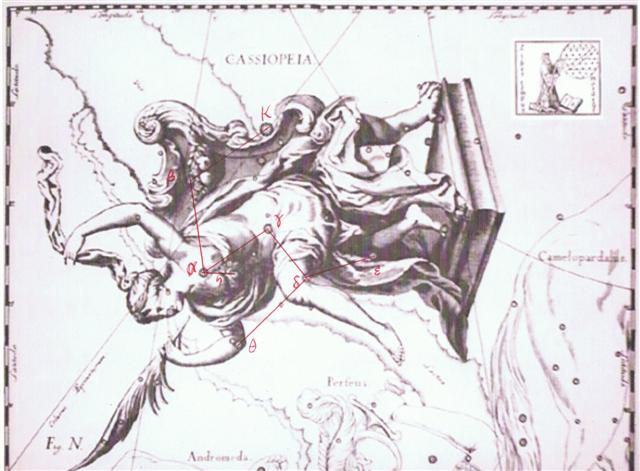16-2. If the intention of the creator of the E text was to indicate the beginning of 'close embrace' at Eb5-35, then the missing central part of glyph Eb6-1 would make sense, because it could illustrate a timespace where the ruler was invisible: ... The king, wearing now a short, stiff archaic mantle, walks in a grave and stately manner to the sanctuary of the wolf-god Upwaut, the 'Opener of the Way', where he anoints the sacred standard and, preceded by this, marches to the palace chapel, into which he disappears. A period of time elapses during which the pharaoh is no longer manifest ...
After 50 + 14 = 64 right ascension days' absence the ruler was due to return where there was an opening (te vaha) for him, which could be visualized by the same type of glyph as that for Aldebaran (Ana-muri, the Rear pillar at the foot of which was the place for tattooing) on side a of the G tablet.
At Eb7-27 Metoro did not say te vaha mea but simply te vaha, presumably to indicate this was not the red (→ Great, although both Aldebaran and Antares are reddish in colour) dawn opening in MARCH for the SUN but instead his exit hole for leaving at Lesath (the Sting, Υpsilon Scorpii) half a year later.
Vaha. Hollow; opening; space between the fingers (vaha rima); door cracks (vaha papare). Vahavaha, to fight, to wrangle, to argue with abusive words. Vanaga. 1. Space, before T; vaha takitua, perineum. PS Mgv.: vaha, a space, an open place. Mq.: vaha, separated, not joined. Ta.: vaha, an opening. Sa.: vasa, space, interval. To.: vaha, vahaa, id. Fu.: vasa, vāsaŗ, id. Niuē: vahā. 2. Muscle, tendon; vahavaha, id. Vahahora (vaha 1 - hora 2), spring. Vahatoga (vaha 1 - toga 1), autumn. 3. Ta.: vahavaha, to disdain, to dislike. Ha.: wahawaha, to hate, to dislike. Churchill.
|
||||||||||||||||||||||||||||||||||||||||||||||||||||||||||||||||||||||||||||||||||||||||||||||

.jpg)


